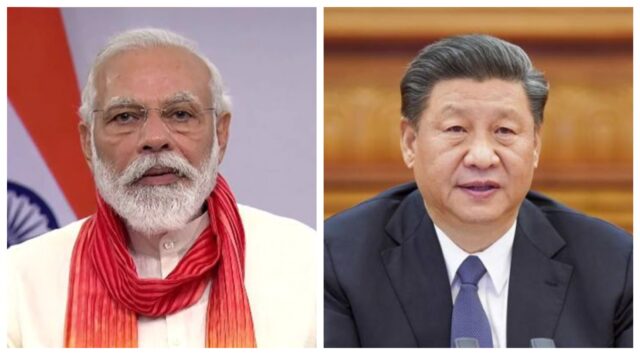NEW DELHI: The government needs to carefully think through the implications of curtailing or limiting business and trade ties with China, economists are warning. Rajat Kathuria of the economic policy think tank ICRIER is pessimistic about it.
“It seems largely political, an expression of the government’s frustration and anger over what happened in Ladakh,” he says, “but such a move will have serious domestic repercussions in the short term by disrupting supply chains.”
Prof. Biswajit Dhar of Delhi’s Jawaharlal Nehru University notes that “the Indian economy is deeply enmeshed with the Chinese economy. India is dependent on China in many sectors including, and most important, electronics, telecom equipment and pharma.”
Senior officials admit that Ladakh may have triggered the move to send a strong message to China but they see in it an opportunity. “It is disturbing that a country of India’s size, and with a huge internal market, is so dependent on one country in strategic sectors,” one of them told StratNews Global.
If that is indeed the grouse, it’s not clear why it was not realised five years ago and why nothing has been done in this period to rectify it. It’s no secret, for instance, that Indian telecom equipment makers are up against state-owned firms in China that are able to offer low prices, loans and timely delivery. Rules requiring the government to favour Indian companies have got steadily diluted over the years to the point where few officials even bother to consider them.
Lining up alternative supplies of telecom or electronic equipment may not be a problem, says Kathuria. “Japan, South Korea and Taiwan are established players in electronics and telecom equipment but buying from them is no guarantee that the product is not of Chinese origin. Like it or not, China is a major supplier of such items to the world. Where and how does one draw the line on a semi-conductor chip fabricated in China and completed in South Korea or Japan or in 20 other countries with established electronics industries?”
Then again, buying from them may not guarantee China’s lower cost. End result, the Indian consumer will have to pay more.
Take a look at pharma. Is there any alternative to China as a pharma supplier? Prof. Dhar makes a telling point: “All pharma intermediaries come from China, we only produce the pills.”
Even in the case of antibiotics and vitamins, the dependence on China is a staggering 90 per cent. Until last year, India was even importing potassium permanganate from China (used extensively in the textile industry and as a water treatment agent). Unfortunately, India over the years shut down its public sector units making bulk drug formulations. Private industry could not expand sufficiently to fill the vacuum (since considerable capital is required), so shortages persist which are met through imports.
The need to boost the local drugs industry is rendered all the more urgent since there are growing doubts over the quality of intermediates China is supplying. Recent crackdowns by U.S. drug authorities on India-made pharmaceutical products did highlight deficiencies but it was never clear if poor quality Chinese-made intermediates were the issue.
This needs to be investigated and quality controls put in place. But given the shambolic manner in which policy is made and implemented in India, nothing may happen to improve things at the Chinese end.
Media reports suggest India plans to hike tariffs on a range of Chinese products imported into the country. Dhar believes tariffs are not the answer. “The fact is goods are being imported because the country needs it, there is a demand for them. Even if tariffs are hiked, goods will still come but the Indian consumer will have to pay more.”
It underscores the demand from sections of industry that the government speeds up its discussion on an industrial policy, which can lay down the roadmap for rebuilding local manufacturing. This is urgent and should be Priority No.1, given that Modi’s ‘Make in India’ has failed. Manufacturing’s share of the GDP came down last year from 17 per cent to around 16 per cent. Demonetisation wiped out many micro, small and medium enterprises that are the main employment generators. Add to that the gloomy global economic scenario which ensured that the Indian economy had slowed to a crawl. Somehow none of the warning signals were read (or maybe they were ignored).
There is also need for an Innovation Policy to get Indian minds to come up with the kind of solutions that India needs. India’s officialdom needs to discard the mindset that foreign investment will build India’s infrastructure, endow us with technology and facilitate large-scale manufacturing. Government must make it worthwhile to invest in the basics so that when a foreign investor comes in, all he needs to do is plug in and start producing.
















